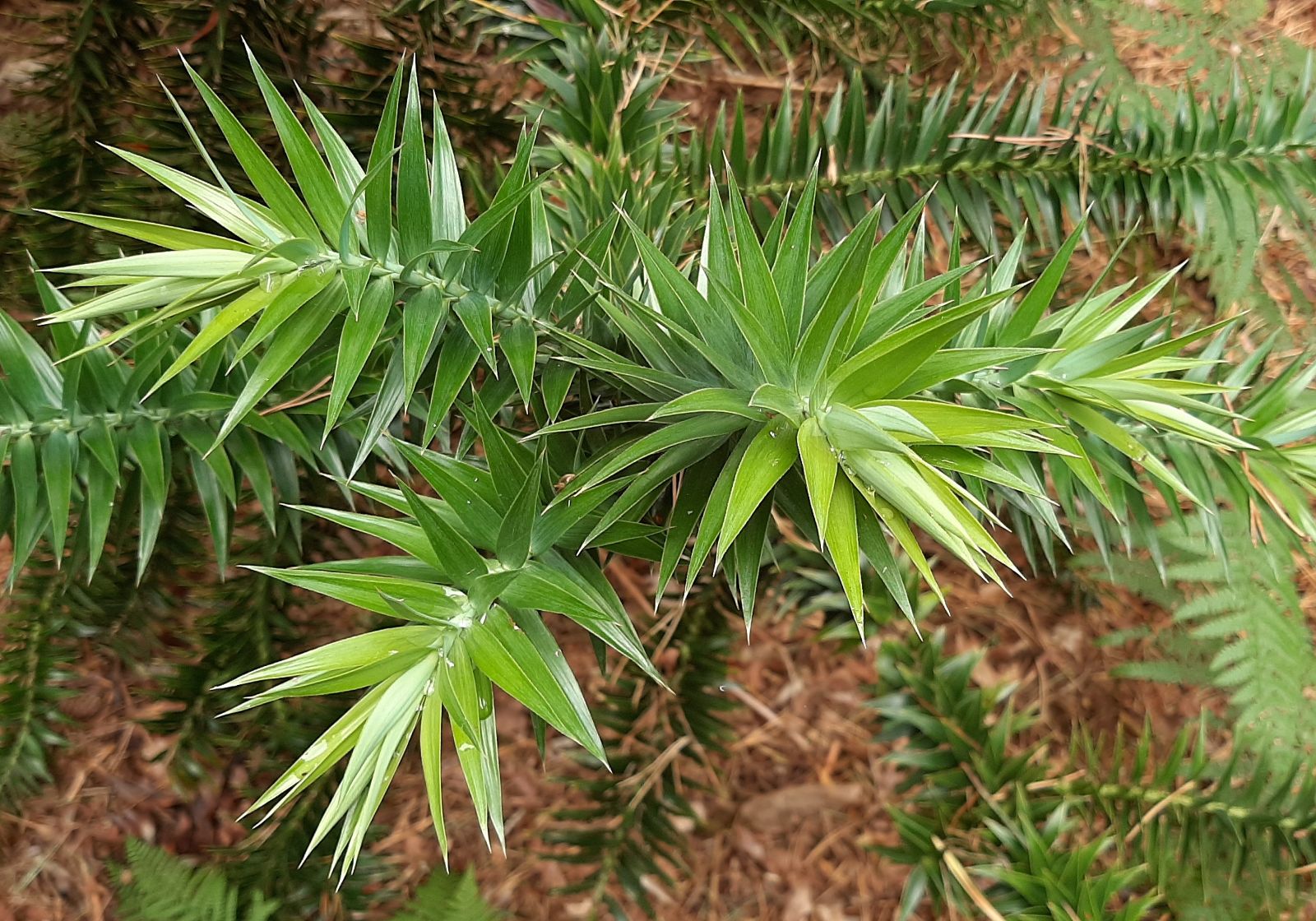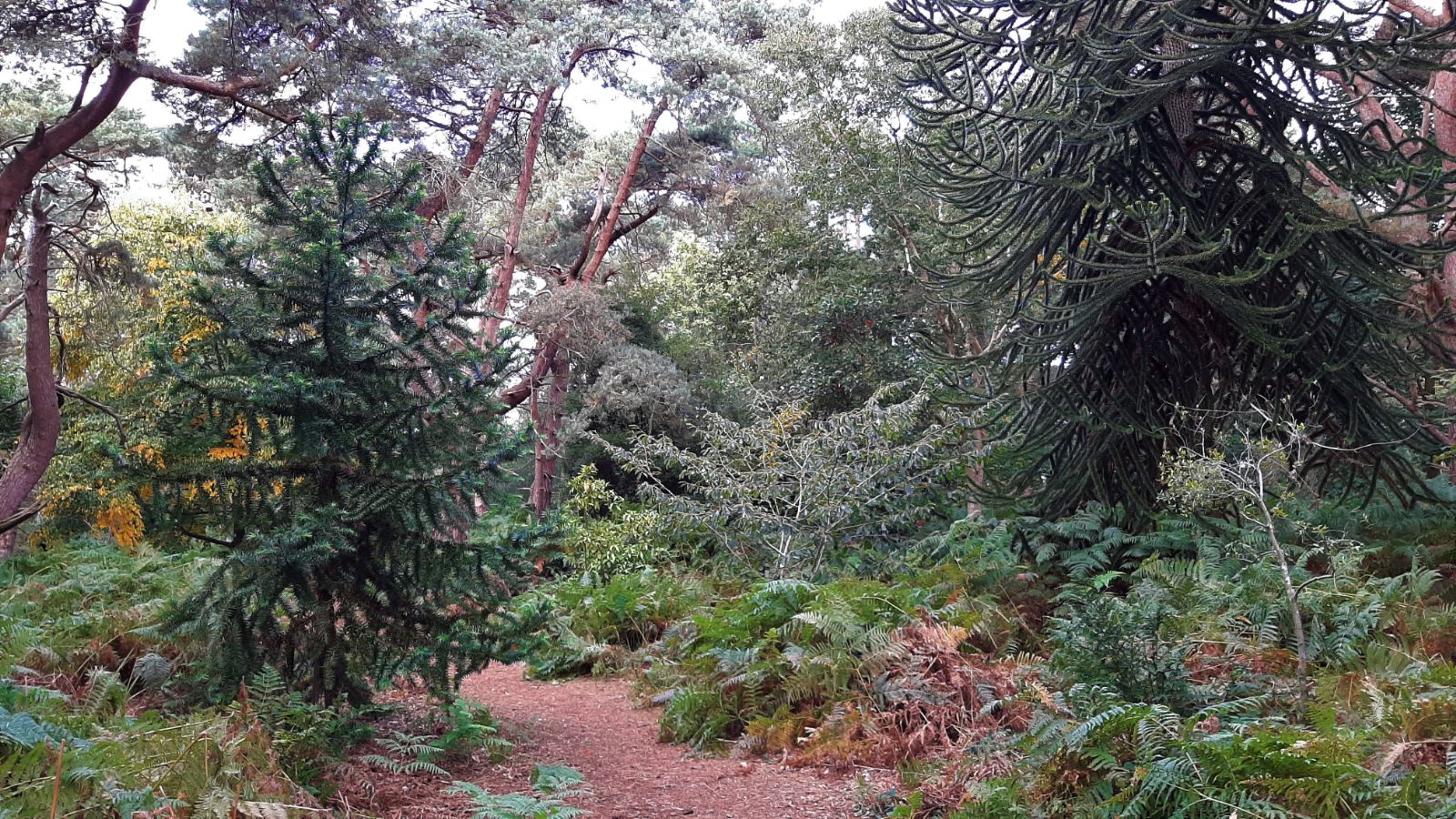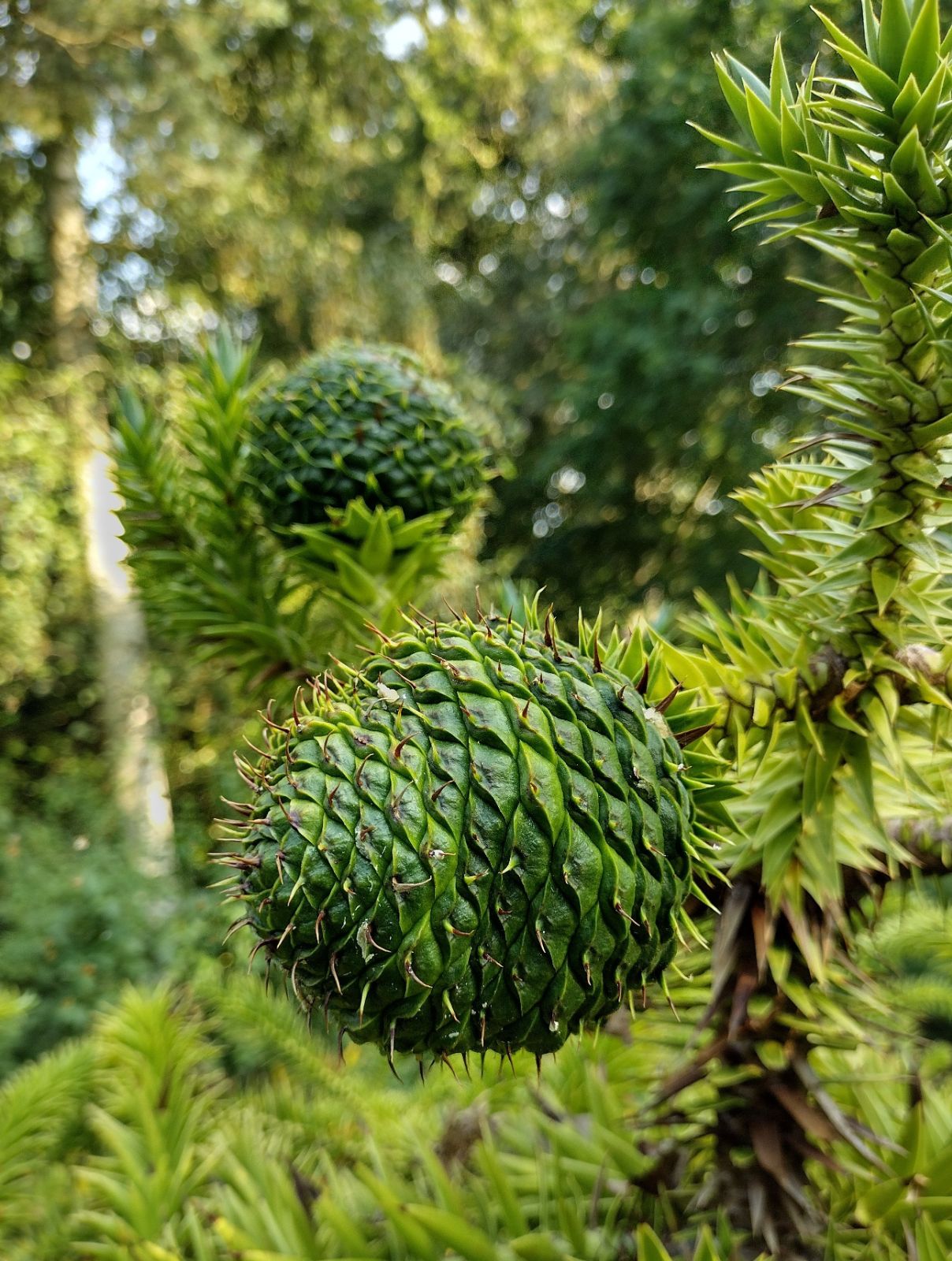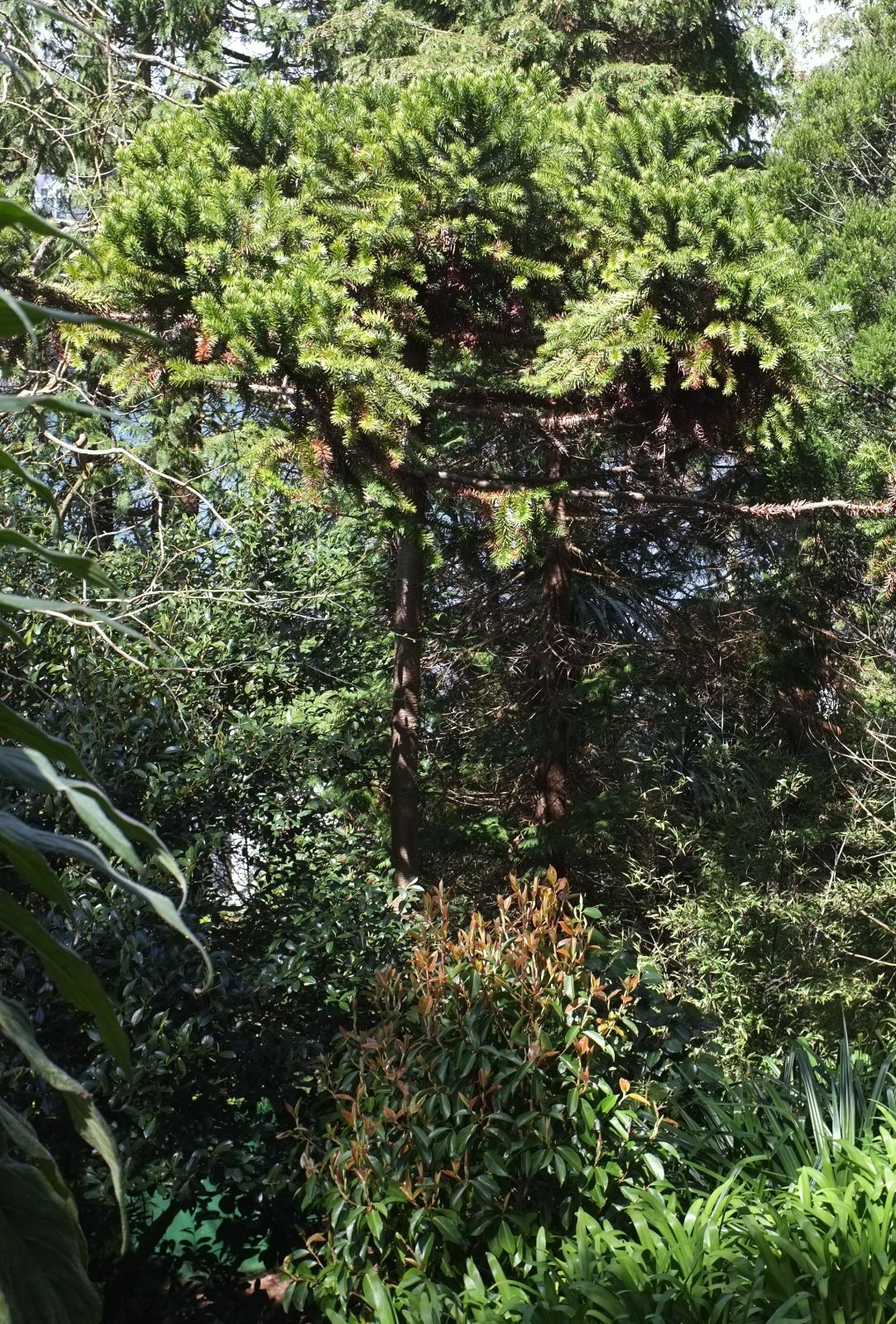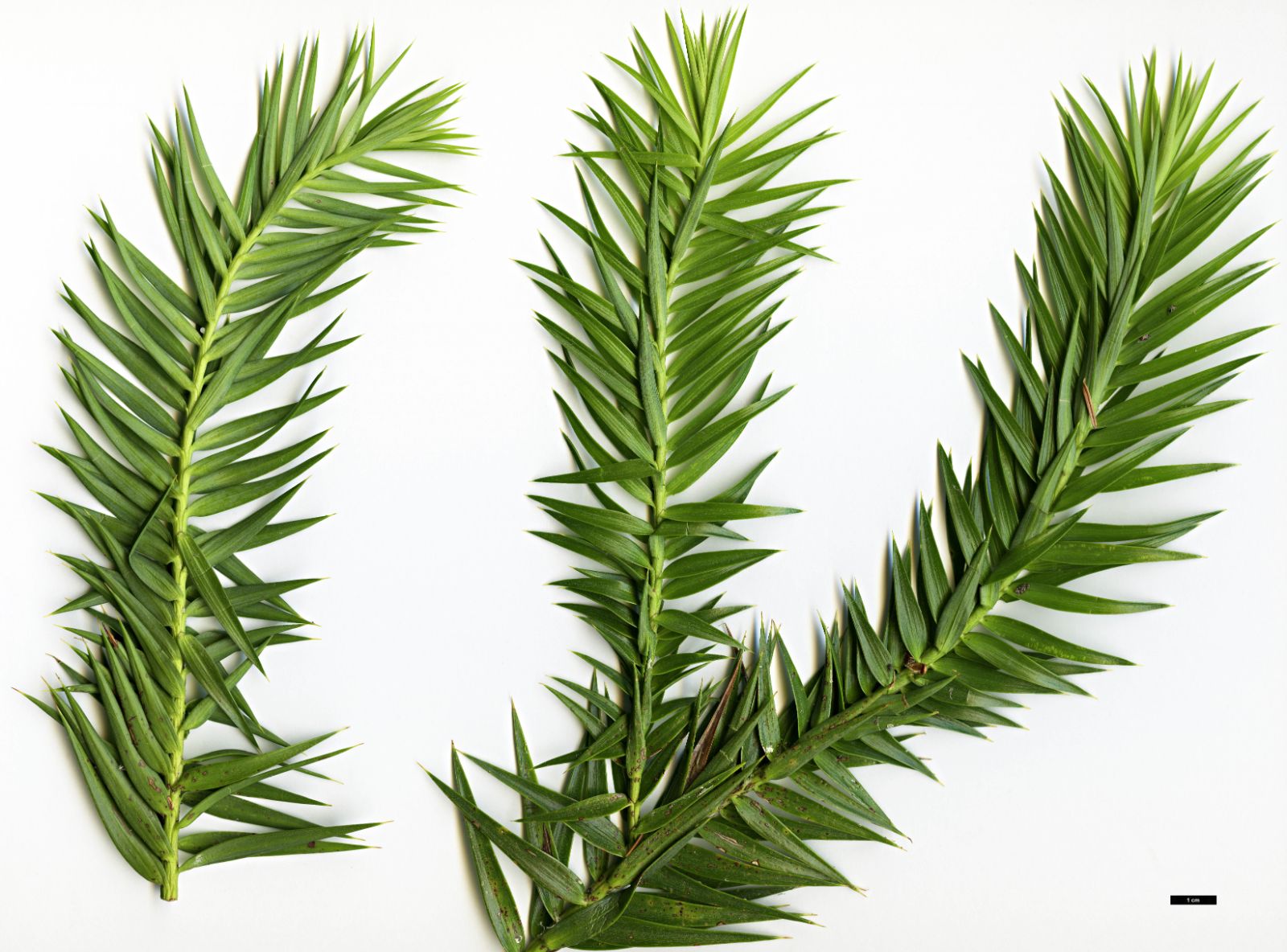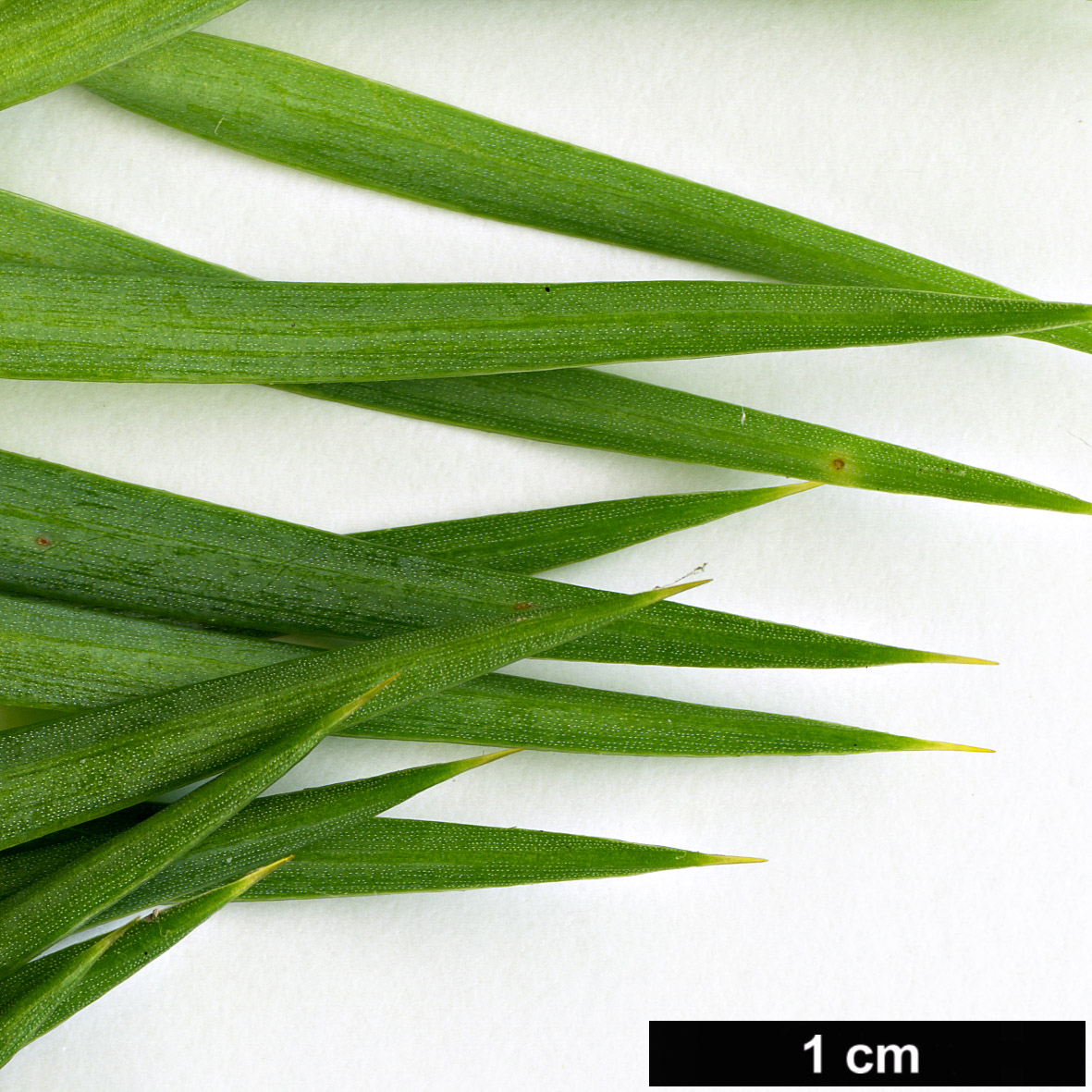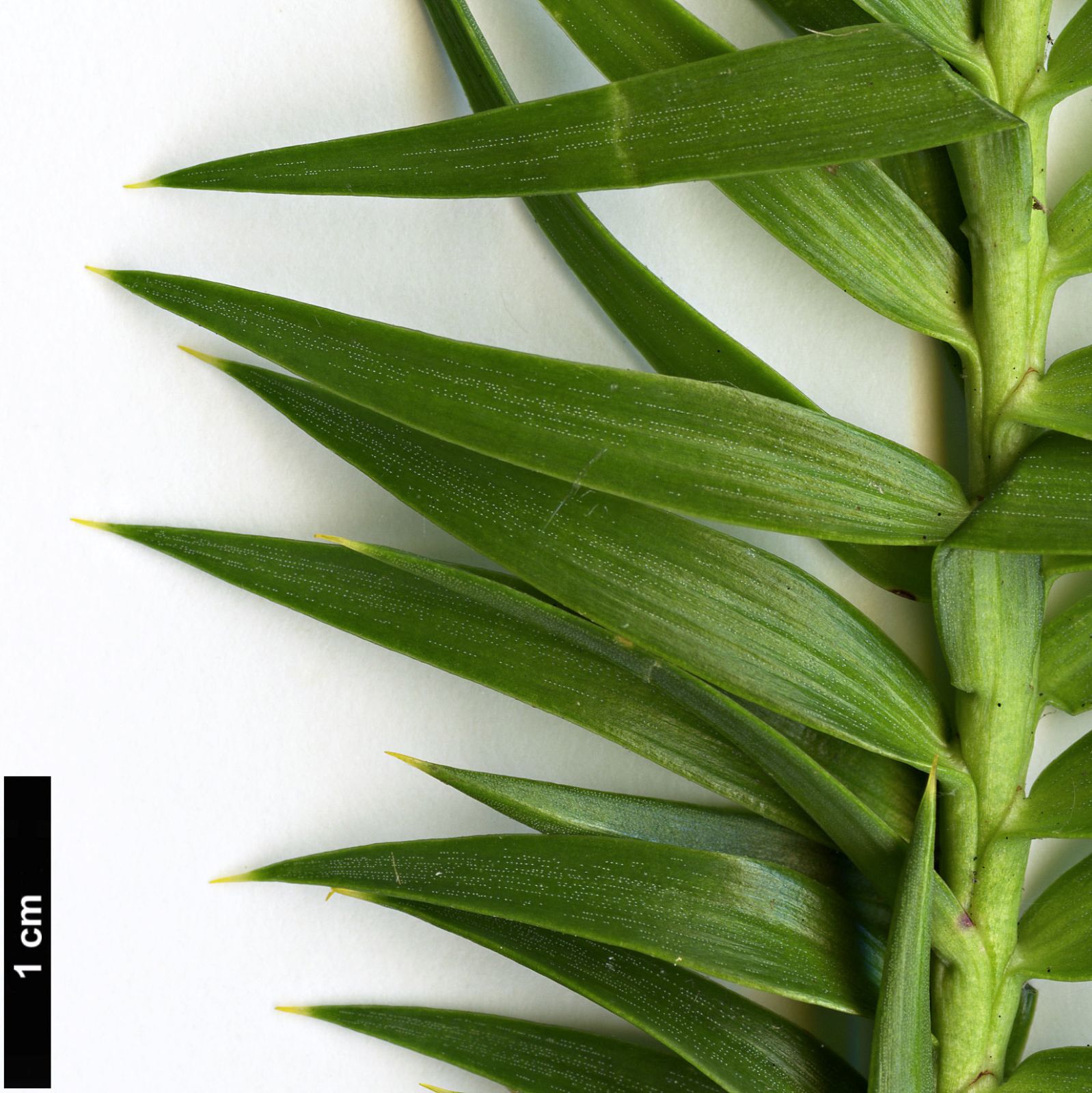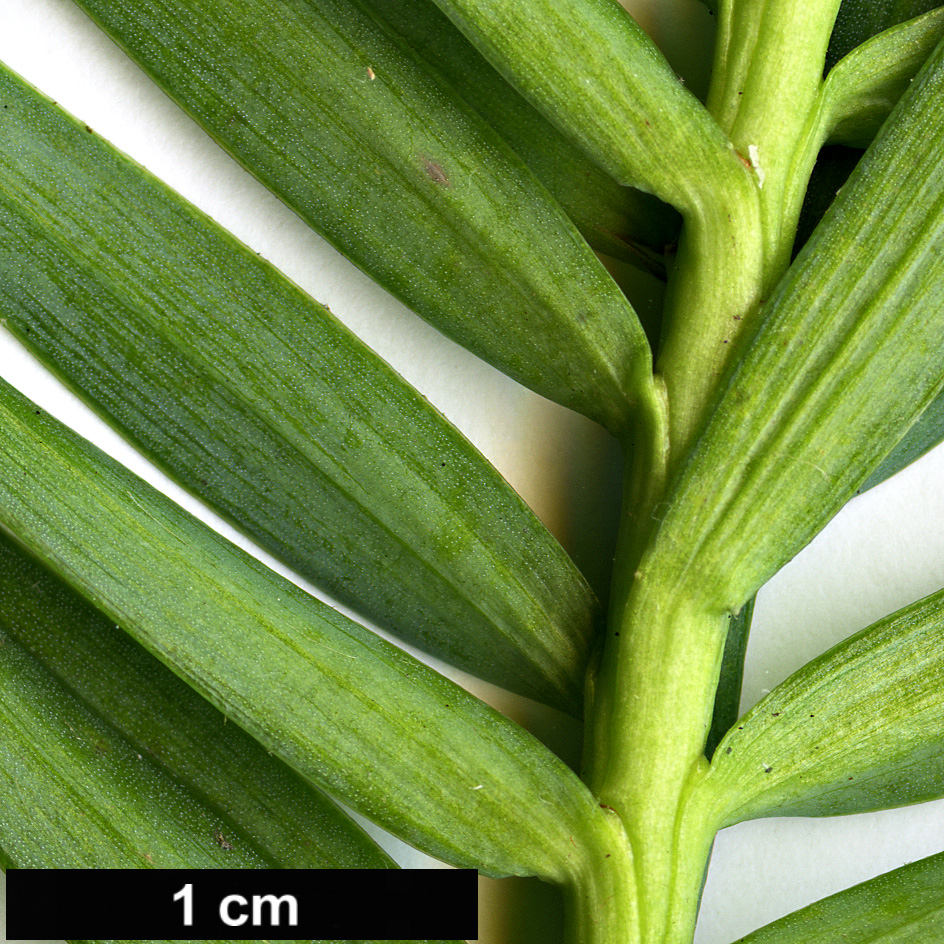Araucaria angustifolia
Sponsor
Kindly sponsored by
Harriet Tupper
Credits
Tom Christian, John Grimshaw & Ross Bayton (2019)
Recommended citation
Christian, T., Grimshaw, J. & Bayton, R. (2019), 'Araucaria angustifolia' from the website Trees and Shrubs Online (treesandshrubsonline.
Genus
Common Names
- Brazilian Monkey-puzzle
Tree to 35–40 m, 1.5 m dbh, with single straight trunk. Bark scaly, with horizontal striations. Branches in whorls of four to eight, dying from base as tree ages to leave a flat-topped crown of gaunt appearance. Leaves loosely imbricate, lanceolate, 2–6 0.5–0.8 cm, apex acute, leathery and stiff, dark green or glaucous, shorter and more spirally arranged on fertile shoots. Male strobili borne on short fertile shoots, forming dense erect cones to 8–20 1.3–2 cm. Female cones wider than long, narrowing from the centre towards the tip, 12 cm 16 cm, each scale with stout recurved appendage. Seeds edible, cuneiform, 3 cm long, chestnut-coloured. (Thomas 2016, Silba 1986, Krüssmann 1985b, Dallimore & Jackson 1966, Covas 1995).
Distribution Argentina Misiones Province Brazil Mostly in the southern-most states of Paraná, Santa Catarina, and Rio Grande do Sul, but also present in São Paulo, Minas Gerais and Rio De Janeiro States. Paraguay
Habitat Mixed subtropical forest between 500 and 2300 m asl (to 1800 m in Brazil, to 2300 m in Argentina and Paraguay) on acidic, laterite soils with up to 1500 mm rain per annum.
USDA Hardiness Zone 8-9
Conservation status Critically endangered (CR)
Araucaria angustifolia resembles a smaller-leaved, less tidy A. araucana when young and is obviously closely related to that species. Dallimore & Jackson (1966) suggest it is “readily distinguished by its softer and more loosely arranged leaves”. The same authors also suggest (as do many others) that it is not hardy in the United Kingdom but recent experience suggests that it is well worth trying – even in less favoured situations than Cornwall!
The largest tree currently known from the United Kingdom grows in the famous gardens at Tresco Abbey on the Isles of Scilly – in 2016 it was 8 m tall. On the mainland UK it grows well at Casa di Sole in Devon, from where New Trees cited three examples of 6, 7 and 8.7 m when measured in 2006, but by 2017 only two were still recorded by The Tree Register, of 5 and 6 m. A specimen in the Chelsea Physic Garden, London, was 6 m when measured in 2016, while another 6 m specimen was growing vigorously until the mid-2000s in Tony Titchen’s garden at Portishead, Somerset, before it was snapped off at the base by a falling tree. There are vigorous young individuals so-labelled at the Harcourt Arboretum near Oxford, at Bedgebury in Kent, at Nymans in East Sussex, and at Peasmarsh Place in West Sussex. The latter was 3.5 m in 2006, having been planted only in 2001. It was collected as seed in Brazil by Lord Devonport. Young trees have been seen in an ordinary garden centre in Gloucestershire, and it is available in specialist nurseries in Europe and North America. It would seem to be worth trying in the mild parts of maritime Europe and western North America. (Grimshaw & Bayton 2009, The Tree Register 2018).
In New Trees mention is made of “apparent intermediates occurring in parts of Chile (S. Hogan, pers. comm. 2007)”. As dicussed here under the entry for the A. angustifolia × araucana hybrid, the native ranges of these two South American species are separated by c. 1,000 km, so it is unlikely that there are “intermediate” forms in wild populations. Nevertheless, A. angustifolia is cultivated in parts of Chile at lower altitudes (pers. obs.) and both species are cultivated together in parts of Argentina where the climate is suitable. The inevitable arrival of the hybrid in northern hemisphere collections, which arose in cultivation in Argentina, makes it easy to imagine an enthusiastic grower receiving seed from Argentina and assuming (or expecting) it to be one species or the other, but overlooking the possibility which we must now acknowledge that it may be a hybrid. It isn’t unreasonable to suggest that this scenario is perhaps especially true for A. angustifolia, increasing the likelihood that some plants grown in the northern hemisphere as A. angustifolia - particularly the very vigorous ones that are proving remarkably hardy – are actually of hybrid origin.
In its wild state the species is listed as Critically Endangered, having suffered a 97% decline in the 100 years to 2016, predominantly for its timber which has been widely used in construction. It remains one of the most important timber species in Brazil and is extensively planted for this purpose. (Thomas 2016).



